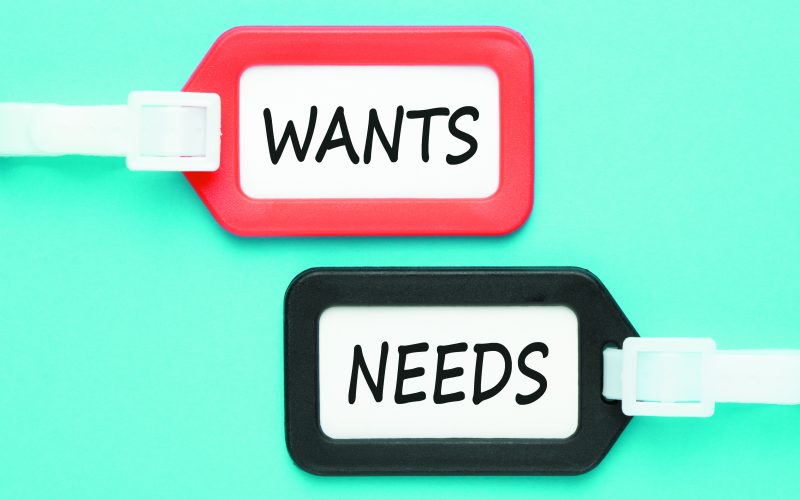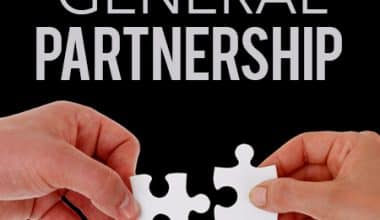We were taught the difference between a need and a want from an early age. We recognize that we have only a few true basic necessities and a plethora of desires. It’s the same in business, but it’s a lot more difficult to distinguish and comprehend. In the next few minutes, we’ll go over the differences between wants and needs plus every detail you should be aware of as business owners and entrepreneurs (whether as aspirants or already established).
Wants and Needs Overview
Organizations seek inspiration from other successful companies, hot industry trends, and new sparkling products in order to stay relevant and innovative.
Customers, on the other hand, are a critical component of any company’s growth.
Customers, indeed, have the power to influence the survival and success of your company. As they spread the word in their social circles, happy consumers result in high retention rates, lifetime value, and brand reach.
Understanding and satisfying customer wants is the first step toward generating the types of customer experiences that result in pleased customers.
Understanding the difference between Wants and Needs in Business
Do you understand the distinction between your consumers’ wants and needs? To make a good sale and build a long-term connection, you must first learn how to appeal to both.
If you try to offer your product without first learning about your consumers’ wants and needs, you may come out as aggressive and uncaring, which isn’t the ideal method to clinch a sale. Instead, to be more productive and gain more business, embrace a buyer-centric strategy. But, how do you not only identify but also meet, your customers’ wants and needs? Let’s take a closer look.
Wants and Needs Defined
Something that would be good to have is referred to as a want. Your clients are likely to have a wish list of features or pieces, but not all of them are required or viable. They may not have a clear idea of what they want, but they are certain of what they need. You can build a solid relationship by offering value. However, when asking questions, pay attention to the answers to see what your customer is most passionate about. You will thrill your customers during the selling process if you can fulfill their needs.
A customer’s understanding that action is required indicates the presence of a need. This action could be motivated by a desire to improve business, fill a gap, or eliminate outmoded processes. Your clients’ businesses may be experiencing depletion or redundancy, which are known as pain points, but these pain points must be strong enough to motivate change. Your clients must also realize that your product has a sufficient beneficial impact to merit making this modification in order for it to qualify as a need.
Wants and Needs: Why is this Important?
Customers will be more likely to purchase your goods if it serves a key need while also satisfying their wants.
Consider your most recent purchase; whether it was something practical or frivolous, it contained an element you wanted. You took the decision to pass up similar products since they didn’t have what you most wanted by selecting a blouse with an attractive pattern or cleaning supplies with your favorite aroma. Understanding your consumers’ needs will make it much easier for you to sell them what they require.
Making a Deal
Asking the appropriate questions and listening carefully are the first steps to successful selling. Consider this procedure as a planned investigation that will lead to a finding all that will allow you gain a better understanding of your consumer. This is where you’ll figure out what their wants and needs are.
Focus on specific questions about why your target consumer wants your product or service, how they want it to work, and what kind of impact they want it to have. This does not imply that you should bombard your clients with all of your product’s perks and features. Now is the time to concentrate on what matters most to your customer, not on what matters most to you.
You must understand the goals of your customer’s department and create trust in order to effectively measure the impact of a possible sale. You may express that you can supply unique solutions to their wants and needs if you understand their needs and the impact of the sale. As a result of this, you’ll become invaluable.
This knowledge allows you to better match with your clients’ pain concerns and the context of their enterprises. As a result, alignment between wants and needs allows you to establish buying intent and assist customers in their decision-making process. Eventually, you will be valued more and have a stronger say in the purchasing process.
When you understand your consumers’ wants and needs, you’ll literally have a voice in the room where the purchase happens even when you’re not present. You’re more likely to land the sale if you meet both your customers’ wants and needs. You’ll also start a pleasant relationship based on mutual understanding.
What are the Needs of customers?
A consumer need is a motivation that leads to the purchase of a product or service. In the end, the customer’s buying decision is driven by their need. Customers’ needs are frequently viewed as an opportunity to resolve or offer surplus value back to the original motive by businesses.
Every day about 12:00 p.m., a pretty valid example of a customer’s need occurs. This is the point at which people start to feel hungry (needy) and opt to buy lunch. The kind of food, the location of the restaurant, and the length of time it will take to satisfy the need are all aspects of what people consider when deciding how to meet their needs.
Customer-centric businesses understand that meeting customer needs and exceeding expectations along the way is the key to sustaining healthy business growth and cultivating positive relationships with the people they serve.
Despite the fact that client centricity is not a new notion, the best ways to establish a customer service emphasis remain vague.
Read Also: STARBUCKS CUSTOMER SERVICE: Best Practices Explained!!! (+Free Tips)
It’s difficult to build a customer-centric organization that actually listens to consumer needs and wants, and there’s a steep learning curve if you’ve never paid attention to customers before.
So, for starters, identifying the types of customer needs to look out for, unpacks typical hurdles that prohibit businesses from meeting their customers’ wants, and reveals ways to get you started.
The most prevalent forms of client needs are listed below, with the majority of them working in combination to influence a purchase decision.
The 14 Most Common Customer Needs
The following includes the 14 most common customer needs that will, in one way or the other influence a sale.
Functionality
Customers expect your product or service to perform as expected in order to solve their problems or fulfill their desire.
Cost
Customers have different budgets that they might use to buy a product or service. In other words, they need cost-effective products with the best of qualities.
Your product or service must be a practical answer for the purpose that your clients are attempting to fulfill.
Prior Experience
To avoid adding to your customers’ workload, the experience of using your product or service should be simple — or at the very least obvious.
Great Design
In the same vein as experience, the product or service should have a sleek design that makes it reasonably simple and intuitive to use.
Dependability
Every time a consumer wants to utilize the product or service, it must perform as described or beyond.
Execution
The product or service must function properly in order for the customer to fulfill their objectives.
Effectiveness
For the customer, the product or service must be efficient through streamlining a time-consuming procedure.
Empathy
Customers expect empathy and compassion from the employees who help them when they contact customer service.
Objectivity
Customers want a company to be fair in everything it does, from price to terms of service to contract length.
Discretion
Customers expect a company they do business with to be transparent. They desire transparency from the firms they pay their monies to.
Maintaining Control
Customers must feel in charge of the company relationship from beginning to conclusion and beyond. Make it simple for customers to return items, cancel subscriptions, alter terms, and so on.
Alternatives
When a customer is ready to make a purchase from a company, they need options. To provide customers the freedom of choice, present a number of products, subscriptions, and payment choices.
Information
From the moment they first connect with your company to days and months after they’ve made a purchase, customers need information. In other words, they should have the information they need to successfully use a product or service. Hence, businesses should invest in educational blog content, instructional knowledge base content, and regular communication.
Adaptability
Customers must be able to reach out to your customer service and support personnel. This entails providing multiple customer support channels. We’ll go over these options in greater detail later.
If businesses can start making changes before their customers’ needs aren’t met, they’ll be able to achieve growth, innovation, and customer retention. However, with so many different types of customer needs, how do you know which ones apply to your specific customers?
How to Recognize Customer Needs and Wants
A customer needs analysis, which takes into account product-market fit, customer feedback, input from your service staff, and any customer service data you can acquire is the initial stage in defining customer needs. You’ll also be able to determine consumer wants as well as any friction in your process from there.
Steve Jobs famously observed, “You have to start with the customer experience and work backward to the technology.” “You can’t start with the technology and work backward to see where you can sell it.”
Whether you sell technology or another type of product or service, the message he’s conveying here is valid.
This entails comprehending why they’ve decided to make a purchase, what expectations they’ve brought to the table, and what roadblocks they’ll face along the way.
You’ll be able to uncover their needs at any stage of their lifecycle if you design your process with these considerations in mind. But where does this understanding come from? That’s where a customer needs analysis comes in.
Steps to Cunducting a Customer Needs Analysis
In product development and branding, a customer needs analysis is used to provide an in-depth analysis of the customer to ensure that the product or message offers the benefits, attributes, and features required to provide value to the customer.
To conduct a successful customer needs analysis, you must do the following:
#1. Survey of Customer Needs
Customer needs analysis is typically carried out through surveys that help businesses determine their position in their respective competitive markets and how they compare in terms of meeting the needs of their target customers.
Customers’ product awareness and brand attitudes, in general, should be the focus of the survey, which should include questions about your brand and competitors.
The following are examples of possible questions:
- Questions about your brand’s positive and negative word connotations
- Questions comparing and sorting brands based on their usage preferences and so on…
#2. Analysis of Means and Ends
After you’ve completed the customer needs analysis survey, you can use the results to gain a better understanding of why customers buy from you and what sets your product or service apart from the competition.
A means-end analysis, on the other hand, examines their responses in order to identify the major reasons why a customer might purchase your goods. Buyer motivations can be divided into three categories:
- Features: A customer purchases a product or service based on the features that come with it. If a customer were purchasing a computer, they might choose it because it is smaller and lighter than other options.
- Benefits: A customer buys a product or service because they believe it will provide them with a benefit, real or perceived. The customer may also purchase the PC since it wirelessly syncs with their other gadgets.
- Values: A consumer buys a product or service because they believe it will help them satisfy their distinct, individual values, whether actual or perceived. The customer may believe that the PC will enable them to be more creative or artistic, allowing them to pursue other personal or professional artistic endeavors.
As you might expect, these reasons for buying products or services differ from one consumer to the next, therefore it’s critical to perform customer surveys, collect responses, and categorize them into these three groups.
You may then figure out which of those motivating aspects you’re addressing and which you might improve to make your product or service even more marketable.
#3. Customer Reaction
If you want to know what your customers think about working with your company, you should ask them. Interviewing customers and members of your support staff can help you determine what your customers need and how to optimize your customer lifecycle.
It’s critical to discover the places of friction that your consumers encounter and the times in their journey that give unexpected delight when you collect data from your customer needs analysis. Some of the questions you should ask include;
- What can your organization do differently?
- What are the elements upon which you can construct your structure?
- And more importantly, what aspects of the experience should be improved?
As you attempt to address problems for your clients, asking these questions might provide you with useful information.
How to Address Customer Needs
Put yourself in your customers’ shoes; What would deter you from achieving ultimate value if you were a customer purchasing your items, using your technology, or signing up for your services?
Your customer needs analysis is a great place to start when it comes to understanding what your customers are thinking, especially when it comes to finding common pain points. You can then create a proactive plan to put your customer-first ideals into action throughout the client’s lifecycle. Here are some helpful hints:
#1. Communicate in a Consistent Manner Throughout the Organization
Customers are frequently caught in the “he said, she said” game, where they are told one thing from sales and another from support and product. Customers eventually become perplexed, and they develop the impression that the company is disorganized.
Internal communication that is consistent across all departments is one of the most important steps toward a customer-centric mindset. The messages will easily translate to meet the customer’s need if the entire company understands its goals, values, product, and service capabilities.
Organize sales and customer service meetings, send out new product mailings, provide thorough new employee onboarding, mandate quarterly pieces of training, and seminars, or have your staff members present webinars to communicate critical initiatives to have everyone on the same page.
#2. Provide Easy-to-Follow Instructions for Adoption
Customers buy products because they think they’ll meet their needs and solve their problems. Adoption setup steps, on the other hand, are not always evident. It’s an uphill battle to regain their trust and remove negative habits if ideal practices aren’t specified from the start in a way they would perceive value right away.
Your products or services will be functional and beneficial if you have a well-thought-out post-purchase strategy.
As soon as a consumer receives a payment confirmation, companies can use in-product and email walkthroughs and instructions to get their customers’ attention. This reduces the amount of misunderstanding, technical queries, and distractions from the initial exhilaration of the purchase.
Furthermore, to ensure effective customer adoption and avoid the “floundering effect” when customers become stuck, a customer education guide or knowledge base should be in place. Some businesses may offer onboarding services for new customers, hold live demos and webinars, and put event and promotion information in their email signatures.
#3. Incorporate Feedback Loops at Each Level of the Process
Lean into customer complaints and suggestions, and you’ll see a shift in how you run your business. Criticism is frequently associated with negative connotations. If you turn problems into opportunities, however, you can easily improve your business to meet the needs of your customers.
For the most part, customer satisfaction scores, customer surveys, exploration customer interviews, social media polls, and personal customer feedback emails can all serve as helpful tools to keep tabs on how your customers are feeling, just as you did in your needs analysis.
You’ll never be in the dark about the state of the customer experience in your organization if you can turn this into a repeatable process. You’ll be able to keep improving it.
Furthermore, take suggestions from customers seriously and act on them to improve design, product, and system flaws. The customer experience is at the heart of most customer support success metrics, and this mindset should pervade the entire organization.
#4. Develop and Maintain Customer Relationships
When a customer purchases a product or service, they expect to be able to use it right away and have it meet their immediate needs. It’s critical to consider their future needs; whether they are delighted within the first hour, week, or month.
Preventing customers from losing their post-purchase excitement and ultimately churning requires proactive relationship-building.
Companies use a combination of customer service structure and communication strategies to manage customer relationships. So, create a customer service team dedicated to check-ins and customer retention, show appreciation for loyal customers with rewards and gifts, host local events, recognize employees who go above and beyond, and communicate product updates and new features.
#5. Provide Solutions that Meet the Needs of the Right Customers
It may seem counterintuitive to exclude customers from your business cohort in order to meet their needs. Understanding which demands you can meet and which you can’t is, nonetheless, a crucial step in solving the proper challenges. All customers’ wants cannot be met equally, and a business must determine which problems it can solve and which are not in line with its mission.
In other words, to find the right customer priorities, create buyer personas and uncover consumer trends, look at customer long-term retention patterns, establish a clear company vision, provide premier customer service to valuable customers, and communicate with your ideal customer in their preferred social media space to capture questions, comments, and suggestions.
NOTE: to stay ahead of the curve and set industry trends, successful startups, brick-and-mortar stores, and Fortune 500 firms all answer and prioritize client needs.
#6. Offer Excellent Customer Service
If a problem emerges, your customers want to be heard and have their concerns addressed. This begins with being able to empathize with their requirements, but along the way, the process of receiving assistance should be simple and delivered through a channel that is convenient for them.
Some consumer needs are time-sensitive and necessitate urgent phone or chat involvement. Others are less urgent and can be dealt with at a more leisurely pace. Let’s look at the many types of customer service and how each one improves your team’s capacity to meet client needs.
Why Are Needs and Wants Important to a Business?
Understanding the needs and wants of customers allows a company ask them further questions about other solutions that might pique their interest.
Listening carefully will enable your organization to determine whether the consumer is interested in exploring other possibilities or if they have reached the end of their purchasing power.
What Will Satisfy Consumer Needs and Wants?
Satisfying a consumer’s needs and wants starts with identifying them and then creating solutions.
What Are 3 Important Things Every Customer Wants?
3 of the 14 most important things every customer wants include; …
- Loyalty
- Accessibility
- Accountability…
What Are Wants and Needs?
A need is something that is required to survive and function. A want is something that will enhance your quality of life. A need, according to these criteria, includes food, clothing, shelter, and medical care, but a want includes everything else.
What Factors Affect Needs and Wants?
Physical factors .age, health, disease, pain, and the influence of a substance or medication are all physical factors. Personality, beliefs, expectations, emotions, and mental health are all examples of emotional and personal aspects. Family, culture, friends, and life events are all examples of life experiences. what the individual requires and wants.






